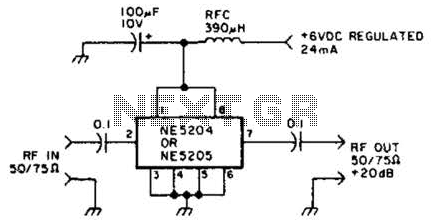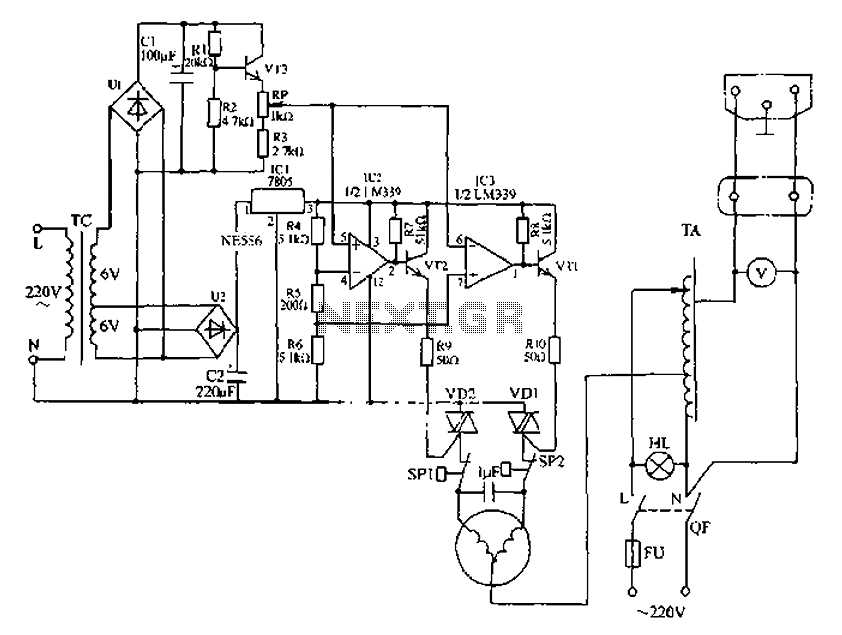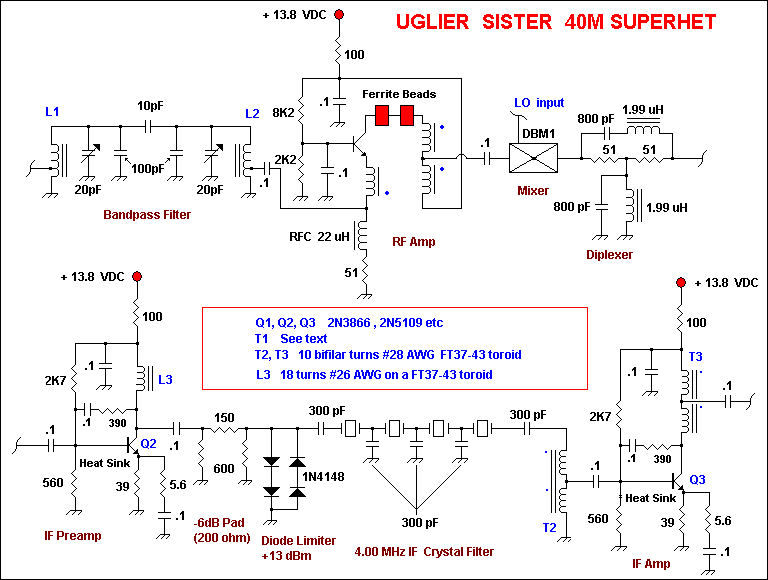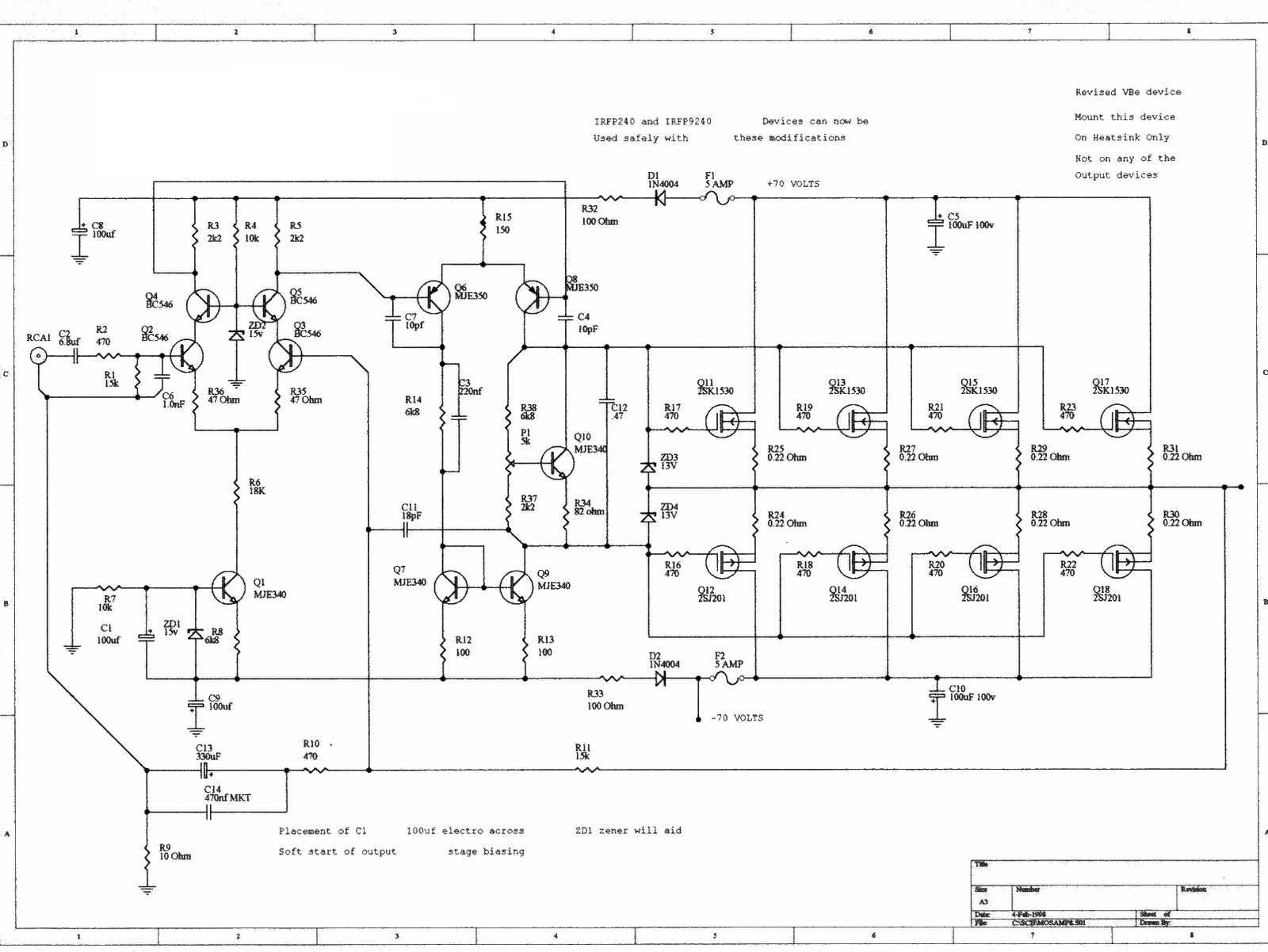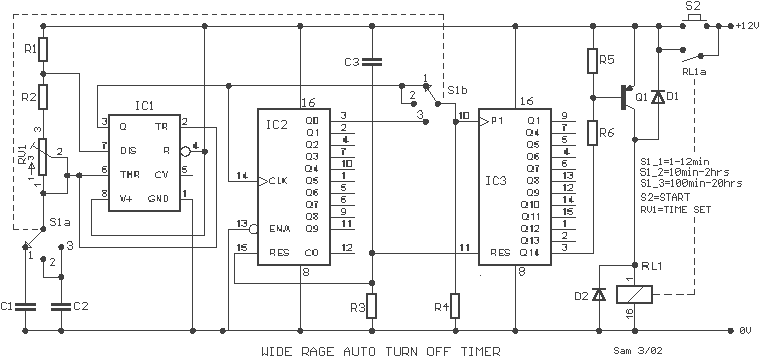
Siren Circuit
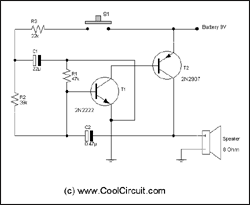
Siren Circuit. This circuit generates a sound siren when switch S1 is pressed, increasing the sound frequency as capacitor C1 charges. The sound frequency decreases when switch S1 is released.
The siren circuit operates based on the charging and discharging characteristics of capacitor C1, coupled with a sound-generating component, typically a piezoelectric speaker or buzzer. When switch S1 is pressed, it completes the circuit, allowing current to flow and charging capacitor C1. As C1 charges, the voltage across it rises, which in turn affects the frequency of oscillation in the circuit. The frequency increases, producing a higher-pitched sound from the speaker.
The circuit may utilize a simple oscillator configuration, such as a 555 timer in astable mode, to generate the sound output. In this configuration, the charging time of C1, determined by the resistor values in the circuit, influences the frequency of the output waveform. As C1 charges, the time period for the output waveform shortens, resulting in a higher frequency sound.
Upon releasing switch S1, the capacitor begins to discharge, leading to a decrease in voltage and a corresponding reduction in frequency, producing a lower-pitched sound. The transition between high and low frequencies creates a siren-like effect, which can be used for alarms or alerts.
To enhance the circuit, additional components such as variable resistors can be incorporated to allow for frequency adjustment, or a diode can be added to control the discharge path of C1, thereby influencing the decay rate of the sound. Proper component selection and values are crucial for achieving the desired siren effects and ensuring stable operation of the circuit.Siren Circuit. This circuit is to generate sound siren when S1 is pressed and increate sound frequency because charged C1, S1 is released when the frequency decreated. 🔗 External reference
The siren circuit operates based on the charging and discharging characteristics of capacitor C1, coupled with a sound-generating component, typically a piezoelectric speaker or buzzer. When switch S1 is pressed, it completes the circuit, allowing current to flow and charging capacitor C1. As C1 charges, the voltage across it rises, which in turn affects the frequency of oscillation in the circuit. The frequency increases, producing a higher-pitched sound from the speaker.
The circuit may utilize a simple oscillator configuration, such as a 555 timer in astable mode, to generate the sound output. In this configuration, the charging time of C1, determined by the resistor values in the circuit, influences the frequency of the output waveform. As C1 charges, the time period for the output waveform shortens, resulting in a higher frequency sound.
Upon releasing switch S1, the capacitor begins to discharge, leading to a decrease in voltage and a corresponding reduction in frequency, producing a lower-pitched sound. The transition between high and low frequencies creates a siren-like effect, which can be used for alarms or alerts.
To enhance the circuit, additional components such as variable resistors can be incorporated to allow for frequency adjustment, or a diode can be added to control the discharge path of C1, thereby influencing the decay rate of the sound. Proper component selection and values are crucial for achieving the desired siren effects and ensuring stable operation of the circuit.Siren Circuit. This circuit is to generate sound siren when S1 is pressed and increate sound frequency because charged C1, S1 is released when the frequency decreated. 🔗 External reference
